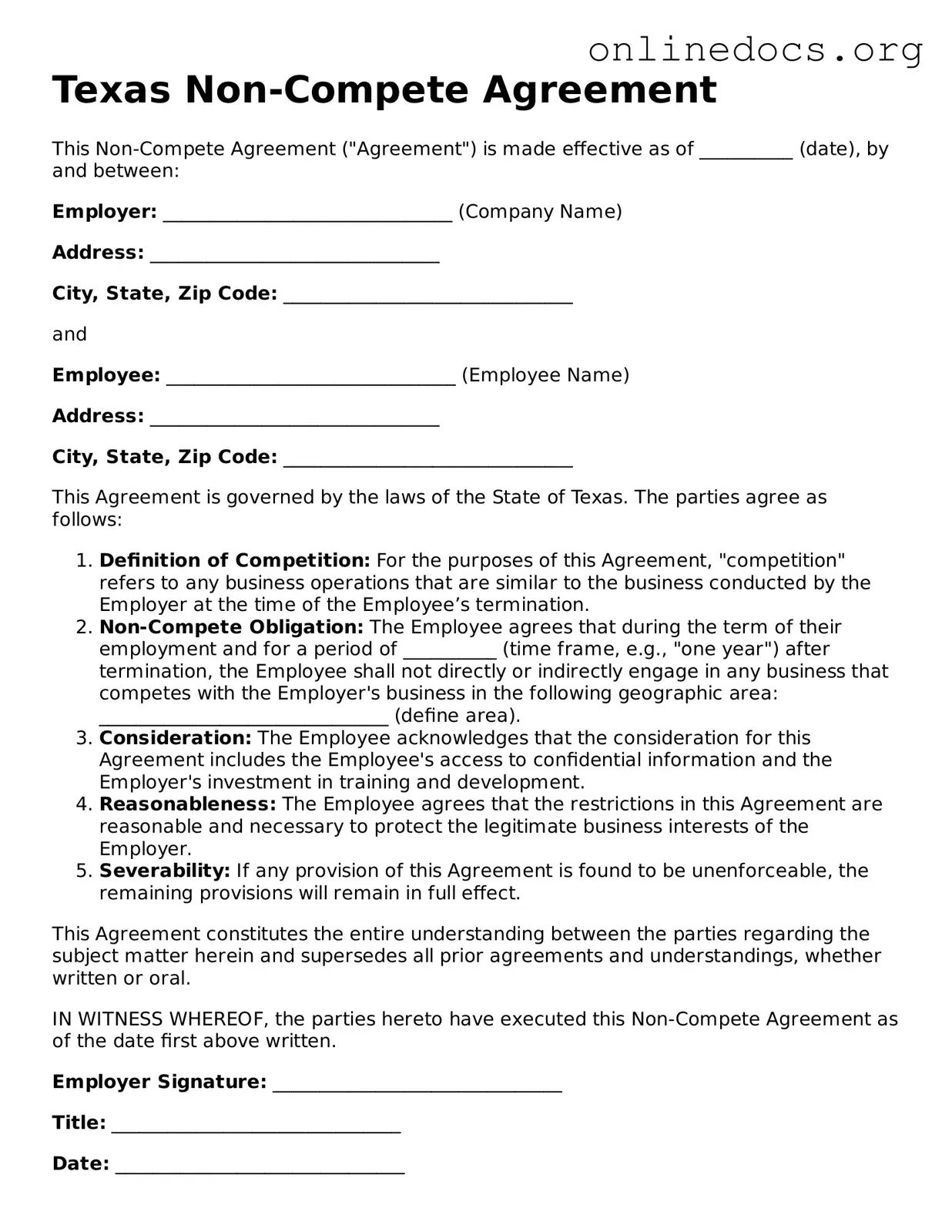The Texas Non-compete Agreement is similar to the Employment Agreement. Both documents outline the terms of the relationship between an employer and an employee. While the Employment Agreement typically focuses on job responsibilities, compensation, and benefits, it may also include clauses that restrict the employee's ability to work for competitors after leaving the company. This ensures that sensitive company information remains protected and that employees do not directly compete with their former employer for a specified period.
Another related document is the Confidentiality Agreement, also known as a Non-Disclosure Agreement (NDA). This document serves to protect proprietary information shared between parties. While the Non-compete Agreement restricts where an employee can work, the Confidentiality Agreement focuses on preventing the sharing of sensitive information. Both documents are essential for safeguarding business interests, but they address different aspects of employee conduct after employment ends.
The Partnership Agreement is another document that shares similarities with the Non-compete Agreement. This agreement outlines the terms of a partnership between two or more individuals. Like the Non-compete Agreement, it may include clauses that prevent partners from engaging in competing businesses during or after the partnership. This ensures that partners do not undermine each other's interests and that the partnership remains viable.
The Independent Contractor Agreement is also comparable. This document governs the relationship between a company and a contractor. Similar to a Non-compete Agreement, it may include clauses that restrict the contractor from working with competitors during the contract period and for a specified time afterward. This protects the company's interests and maintains a competitive edge in the market.
The Franchise Agreement shares common elements with the Non-compete Agreement as well. This document governs the relationship between a franchisor and a franchisee. It often includes non-compete clauses that prevent the franchisee from opening a competing business within a certain geographic area and timeframe. Such restrictions help maintain the brand's integrity and market position.
Understanding the nuances of various legal agreements is essential in the business world, especially when it comes to ensuring confidentiality and protecting proprietary information. One such pivotal document is the Employment Verification form, which is indispensable for validating an employee's work status in the United States. This form not only guarantees compliance with federal regulations but also upholds the integrity of the hiring procedure, thereby shielding employers from potential legal ramifications tied to unauthorized employment. For more information on this crucial document, you can refer to legalformspdf.com.
The Shareholder Agreement is another relevant document. This agreement outlines the rights and responsibilities of shareholders in a corporation. It may contain non-compete clauses that restrict shareholders from engaging in competing businesses while they hold shares and for a certain period afterward. This protects the company's interests and ensures that shareholders do not divert business opportunities away from the corporation.
The Licensing Agreement is similar in that it outlines the terms under which one party can use another's intellectual property. This document may include non-compete provisions that prevent the licensee from using the licensed material to compete directly with the licensor. Both agreements aim to protect the interests of the parties involved while allowing for the use of valuable resources.
Finally, the Non-solicitation Agreement is closely related to the Non-compete Agreement. This document restricts an employee from soliciting clients or employees of their former employer after leaving the company. While the Non-compete Agreement focuses on working for competitors, the Non-solicitation Agreement aims to prevent the loss of business and talent to competitors. Both agreements work together to protect a company's interests and maintain its competitive advantage.
